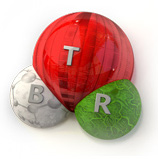Identifying the source of water pollution using synthetic DNA sand
Date: 28.2.2020
Sometimes it's helpful to follow a stream of water to find out where the water is coming from and where it's likely to go. Currently, only a few tracers for tracking fluids exist. But a large and complex network like groundwater requires lots of different tracers.
 "The main idea of the project is to build DNA based tracers," says Sulalit Bandyopadhyay, a postdoctoral fellow at NTNU's Department of Chemical Engineering. The tracers use artificial DNA. This DNA can be made in a practically unlimited number of variants.
"The main idea of the project is to build DNA based tracers," says Sulalit Bandyopadhyay, a postdoctoral fellow at NTNU's Department of Chemical Engineering. The tracers use artificial DNA. This DNA can be made in a practically unlimited number of variants.
The unlimited variants "enable us to get as many different tracers as we want," says Bandyopadhyay. Having a lot of distinct tracers is useful for seeing how fluids flow in complex networks.
The artificial DNA is encapsulated in a silicon-based layer combined with iron oxide. The resulting particles resemble sand and are magnetic. This way, the particles can be extracted from the stream using a magnet. This method is convenient in water with lots of foreign elements.
"The tracers aren't that expensive to make," says Bandyopadhyay, "and only tiny quantities are needed, which increases the marketing opportunities."
The particles can be made in different shapes and sizes, which in turn can make them easier to separate from each other. The encapsulation also prevents the DNA from coming into contact with the environment.























